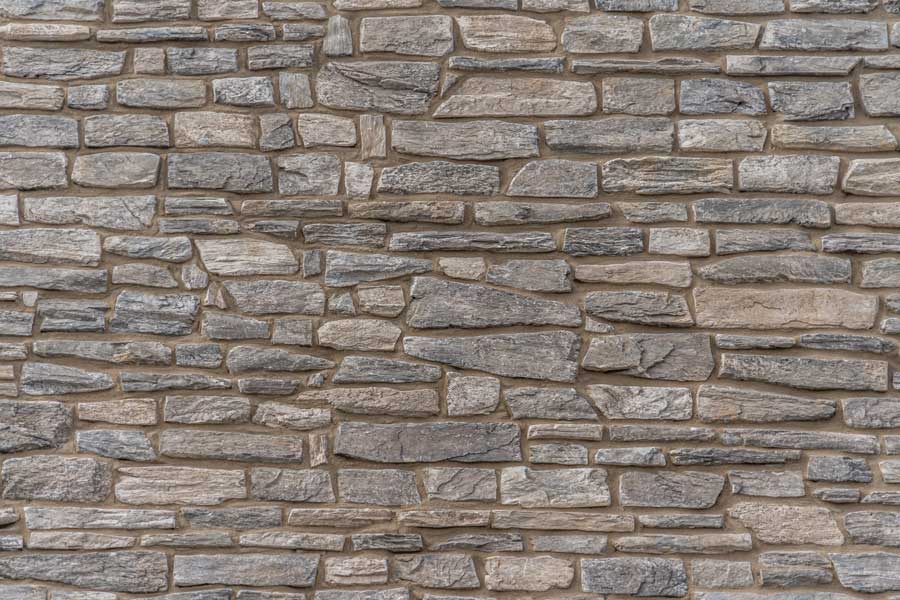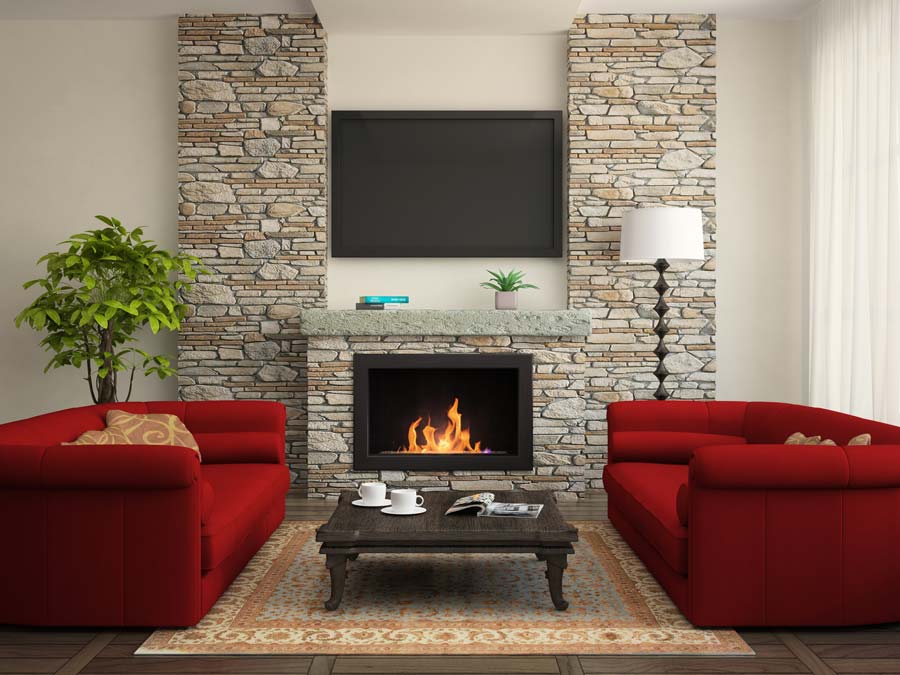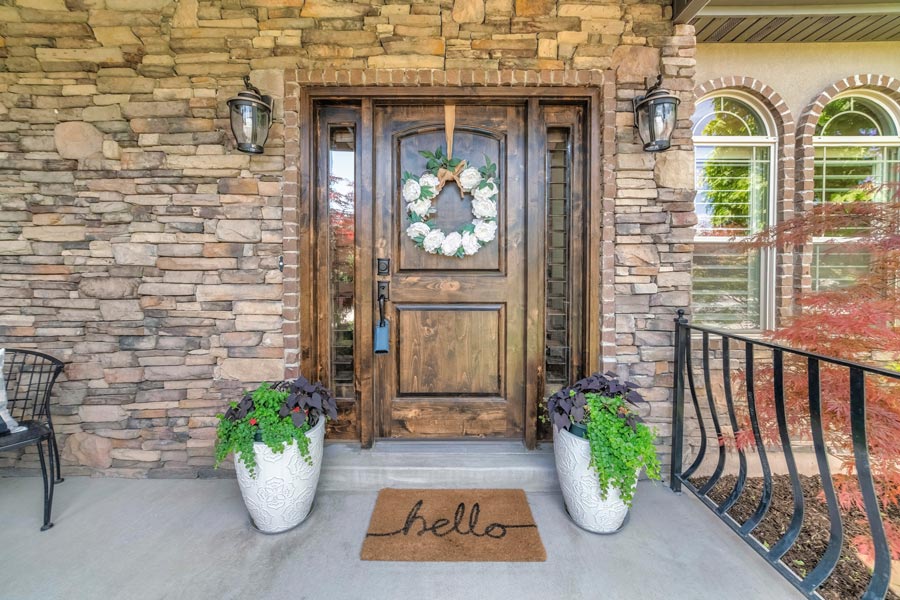What exactly is veneer stone & veneer stone siding? It is a thin veneer of decorative stone commonly used for feature walls in the home usually around a fireplace or pillars accents. On the exterior of your home one would use Stone siding veneer which usually covers exterior walls and pillars.
Stone siding veneer on homes and buildings is a decorative feature and can really enhance the curb appeal of any home or building.
The two most common stone veneers on the market are natural stone and synthetic cultured stone.
Natural stone veneer is made from real, quarried stone that is sliced or otherwise carved to match the specifications of your design. The textures, imperfections, and tonal variances of natural stone veneer give it a natural and rustic appearance.
Until around 60 years ago, when cultured stone was first made, natural stone was the only viable alternative for landscaping work.
So, what exactly is cultured stone, and how is it created? The stone is a product that is manufactured and engineered to look like natural stone but is lighter and hence easier to install.
It is made out of concrete and aggregate components that have been pressed into moulds. It is stained, sprayed, or painted in natural-looking hues and patterns to approximate the look of natural stone and fit the decor of your outdoor or indoor environment. Though they may appear identical at first look, there are other aspects to consider in the cultured stone vs actual stone discussion.
The pricing of natural stone veneer versus artificial stone veneer is not as straightforward. Cultured stone may appear to be the less expensive of the two stone veneer options, but this is inaccurate. Though their installation costs are comparable and cultured stone may appear to be the less expensive option initially, natural stone is the more cost-effective alternative in the long run.
Cultured stone is less expensive, but it does not endure as long. Natural stone is not significantly more expensive up front, and it will survive longer and retain its high-quality aesthetic for many years to come. However, higher-end cultured stone does not look very different from natural stone, and the difference in raw material cost is lower.
Because of its weight and density, the most significant advantage of adopting a cultured stone veneer is its ease of installation. Manufactured stone is lighter, easier to cut and handle, and can be fastened to a broader range of substrates, including drywall.
On the other hand, natural stone can only be laid directly on porous stone, concrete, brick or block. Metal lath and scratch coat are essential to allow thin sheets to be secure when fastening to a flat surface. Natural stone for walls is also more challenging to work with because it is denser and thus more difficult to cut than cultured stone.


A natural stone exterior is your first choice if you want a more visually appealing solution for your design. Natural stone is certainly attractive, with a natural, inviting texture that begs to be touched. Because no two stones are the same, your walls will not have a repeating pattern.
Natural stones come in a wide range of hues; you can intersperse stones of different colours to create a more intriguing design. You can also keep a delicate, natural uniformity by using stones of similar colours.
Cultured stones are made to look like natural stones by employing paints and stains. However, they come in a broader range of colours and styles because they are manufactured. Though an excellent facsimile, the colour on cultured stones will fade with time and exposure to sunlight and other conditions.
Consider using split rubble veneer for your next project if you want a natural, diversified aesthetic.
Natural stone comes in a wider range of sizes, with a minimum thickness of 34 inches and a maximum thickness of 112 inches. The weight difference between the stones is significant, with a cultured stone weighing almost half as much as a natural stone weighing approximately 13 pounds per square foot. In terms of size, full-dimension cultured stone typically starts at around 2 inches thick and can go up to about 6-8 inches thick. These cultured stone faces can be as large as 14 inches in diameter. Some people like thin stone veneer, a subcategory of cultured stone that is 1 to 2 inches thick.
When deciding between natural stone and imitation stone, consider longevity! If properly fitted, the natural stone veneer will not let you down over time; it will retain it’s original look and feel for a lifetime, so you won’t have to worry about losing its high quality or attractiveness over time.
Natural stone veneer, unlike cultured stone, is not coated and retains its colour better. Natural stone veneer is also adaptable enough to integrate seamlessly with any future landscape work and designs you adopt over time, eliminating the need to modify it afterwards.

A&A Masonry is an award-winning Toronto based firm specializing in almost everything exterior.
Our mission is to offer a unique and reliable service in anything exterior within the Greater Toronto Area, differentiating ourselves from the competition by means of always delivering what we promise, on time and on budget.
Send us Email
ADDRESS
33 Billingham Road Etobicoke ON M9B 3X2